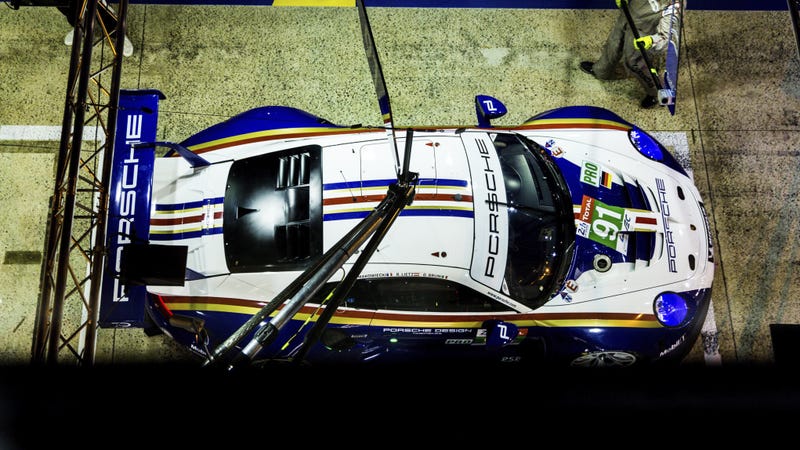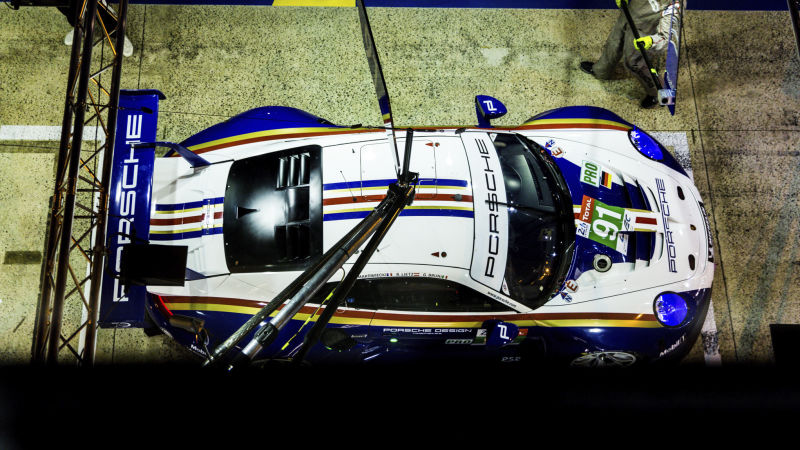
There are a lot of awful rule sets in the world of racing, but this season the ACO and the FIA have combined to produce what is perhaps the worst rule in racing history. While the rule was technically implemented at the 6-hour race at Spa last month, the full extent of its impact on endurance racing was shown in stark detail during this weekend’s 24 Hours of Le Mans. Teams were given an artificial limit on how long their stints could be. For example, no team was allowed to run more than 14 laps per stint, and pro-class teams were limited to 11 laps in their first stint after the green flag.
For a few years now the rules have mandated fuel flow limits on a lap basis, which rewards fuel economy and driver patience. This year, however, the teams were given a per-stint fuel limit, which in many cases was a smaller number than what their fuel tank could legally hold. This artificial limit took away the ability to take risks on strategy for many teams, and in part lead to the absolute domination in every class at Le Mans this year. Without strategic options, endurance racing teams have their respective hands forced.
In 2016, for example, Toyota was able to move into the lead of the race over Porsche by running one lap longer on fuel and tires than Porsche was able to in each stint. By virtue of running longer, they were eventually able to gain a full pit stop length over the German squad. They very nearly won that race, and were it not for a small part failure, they would have. If they’d been forced to stop at the same stint distance as Porsche on each stint, they’d have been effectively mandated out of contention.
Late in the race this year, Toyota driver Kamui Kobayashi missed his pit stop window, passing the pit entrance and driving around for another lap. In order to make it back to the pits, he drove around the majority of the lap on electric power only on a very slow trundle, firing up the engine toward the end of the lap to ensure he had enough juice to get back to the pits. The car was refueled and sent on again unscathed. That is, until the new FIA ruleset intervened.
Advertisement
First, the No. 7 Toyota was called back in to serve a 10-second stop and hold penalty for exceeding the allotted fuel for that stint. A few laps after serving that penalty, the car was forced to stop again for a second penalty. This time it was for exceeding the maximum laps allowed in a stint. That’s two penalties for the same rule infraction. The car lost more than a lap in the process, and while it didn’t lose any positions, they lost touch of the lead and potentially cost the fans a battle between the two Toyotas for the victory in the closing hour.
Advertisement
Certainly there are still a lot of strategic elements left at Le Mans to focus on, but fuel and pit strategy have traditionally been the number one. Similarly, by switching to an American-style pit stop where fuel can be put in at the same time as a tire change, the wheel changers are now much less of a focus on the car’s overall standings. Where before the faster wheel change could result in gaining a few positions on track, the fuel flows at such a slow rate that a tire change can be conducted in less time than a fill-up.
This was the most boring Le Mans 24 in recent memory, certainly in at least a decade. There was very little attrition and the drivers seemed to have fewer brain-fade moments on track. The race organizers have moved all of the focus on the race to the car’s survival and the driver’s ability to drive quickly. By taking the team strategy element out of the race, Le Mans as a whole suffers, and so too do the fans.













